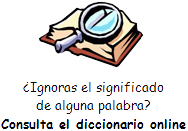Teachers Find Technology Mostly
Helpful in Classroom
New opinion studies have found a majority of teachers believe technology
is helping them do a better job in the classroom.
But the research also shows that many educators are concerned digital
devices can cause physical and mental harm to students.
One study asked higher education teachers to give their opinions on the
use of technology in the classroom. The study involved higher education
teachers at public and private colleges and universities across the
United States.
The 2018 Teaching with Technology Survey was published by the website
Campus Technology. Of those questioned, 44 percent said technology made
their job easier, while 29 percent said it made their job much easier.
While overall feelings about technology were good among college
educators, an increasing number said technology could also be harmful. A
total of 19 percent of those questioned said they felt technology had
made their job harder or much harder.
The study also looked at how technology helped teaching effectiveness. A
large majority of educators, 87 percent, said technology had positively
affected their ability to teach.
Eleven percent said they felt technology had no effect on the quality of
their teaching. Just two percent said technology had a negative effect
on teaching.
Results of the survey also found teachers had good feelings about
technology’s effects on learning. Eighty-three percent said they felt
technology had positively affected their students’ learning. Just nine
percent said technology did not affect student learning, while eight
percent said they believed it had a negative effect.
In releasing the study results, Campus Technology reported that some
teachers had expressed mixed feelings about the use of technology. These
opinions came in the form of open-ended questions answered directly by
educators.
The educators were not identified. One noted that the learning process
can suffer if students depend too much on their devices. “People can
easily get addicted to their devices, and using technology can change
the way the brain develops - not always in a good way,” the teacher
wrote.
Another educator wrote: “Technology is accidentally increasing students'
weakness in reading and figuring things out (or critical thinking). They
confuse clicking with learning.”
Another expressed that while technology had improved learning in some
areas, it had also created “a false sense of security” in others. The
teacher said more research should be done on how the use of technology
compares to traditional teaching methods.
“For example, several recent studies have shown that taking notes with
pen and paper improves student learning over taking notes on a laptop,”
the educator wrote. “For some students, the laptop is necessary. For the
majority, it's a detriment to their learning.”
Research organization Gallup published a study earlier this year on the
use of digital devices by students in grades K-12.
In that study, 42 percent of teachers said the effects of devices on
students’ education was mostly helpful. About 30 percent of educators
said they were neither helpful nor harmful to students. However, 28
percent said they thought the use of such devices was mostly harmful.
Earlier research has shown that a large majority of students at all age
levels own a smartphone. An estimated 53 percent of elementary school
students have their own digital devices. About 65 percent of middle
school students are thought to own them, along with at least 82 percent
of high school students.
The Gallup study also asked teachers to give their opinions on the
possible harmful effects of digital device usage.
About 55 percent of K-12 teachers said the effects of digital devices on
students’ physical health are mostly harmful. Forty-two percent said
they felt the devices are neither helpful nor harmful.
And about 69 percent of teachers said they feel digital devices are
mostly harmful to students’ mental health.
Parents were mostly more supportive than teachers of digital devices and
their effects on school-age children. The Gallup study found that 87
percent of parents believe such devices are mostly helpful, while 13
percent said they are mostly hurtful. |
![]() ).
Utiliza el botón derecho del ratón y "guardar enlace" para descargar el
fichero a tu PC, tablet, Smartphone, etc.
).
Utiliza el botón derecho del ratón y "guardar enlace" para descargar el
fichero a tu PC, tablet, Smartphone, etc.![]() Escucha el audio
Escucha el audio



